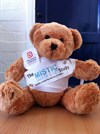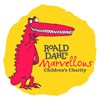 |
MISTIC
A prospective multi-centre trial looking at the incidence and
cause of post burn illness in children with small scalds. This
study required parents of children under 5 years of age, who had
suffered a small burn to complete a questionnaire and record their
temperature for 7 days post injury. Data was collected about how
the child recovered from the burn injury and if they had
experienced any episodes of fever during this time.
Find out more here.
|
|

|
SILKIE
This study exploredthe use of a low friction bed sheets to
reduce skin graft loss after burn injury. This study was funded by
the National Institute of Health Research (NIHR) and trialled the
use of low friction sheets in patients who had received a skin
graft following a burn injury. The study compared the use of these
sheets with standard hospital bedding in terms of skin graft
success, practicality of using sheets in a hospital environment and
costs.
Find out more here.
|
|

|
DRESSVOCs
This study investigated volatile organic compounds VOCs (gases)
emitted from discarded burns dressings, as a means of detecting
infection at the bedside. This study has the ultimate aim to
develop a smelling device that can be used at the bedside to detect
the gases that are produced by bacteria when the burn wound is
infected. The study is being carried out by researchers at the
University of the West of England (UWE).
|
|

|
A road less travelled
This nurse led study was funded by Roald Dahl's Marvellous
Nurses Inventing Room Charity. The research nurses interviewed
parents of burn injured children and professionals from the burn
care team about their experiences. The study mapped the
psychological and emotional journey following significant burn
injury, to assess patient/family needs, current support and areas
for service improvement. A short film was produced, to educate
health professionals and inform practice. Several service
improvement projects are in progress as a result of this study.
|
| |
PSYBIS
This study looked at the experience of burn itch and the ways in
which it affects the lives of children and their families.
Different types of interventions were reviewed to determine which
were the most helpful. The results will be used to improve patient
care in the future. Parents were interviewed in person or by phone
and were asked to rate the frequency, severity and impact of the
burn itch, using simple numerical scales. Children of 8 years and
above were interviewed in person and asked similar questions about
their experience. Results of the study will be disseminated to
healthcare staff and parents via reports in medical journals,
newsletters and presentations at conferences.
|